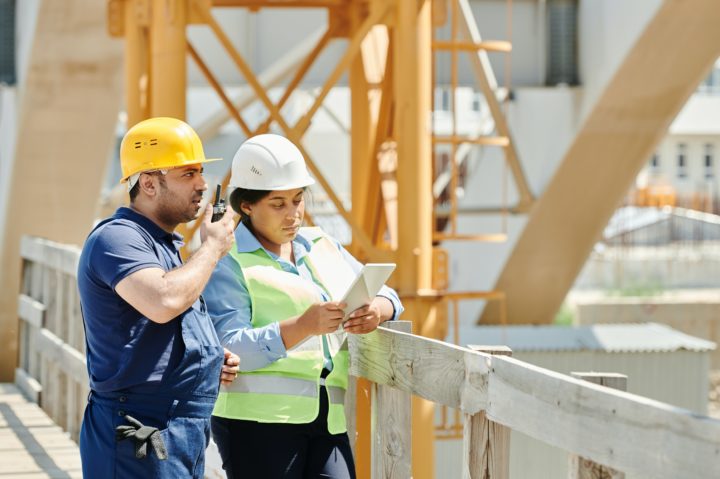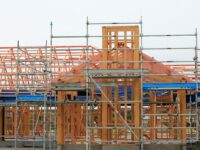The following contribution is from another author.
Every year, construction workers are injured or killed in accidents that could have been prevented. In order to avoid becoming one of these statistics, it is important to be aware of the most common construction accidents and take steps to prevent them. For instance, if the construction site is handling dangerous goods, you would be sure to keep them safely locked away in a STOREMASTA flammable storage cabinet. Some of the most common accidents include falls from height, electrocutions, injuries caused by heavy equipment and slips and trips. Construction workers are at a higher risk for accidents than most other professions. According to the Occupational Safety and Health Administration (OSHA), construction accidents account for nearly 20% of all workplace fatalities each year.
There are many different types of construction accidents, but some of the most common include falls, being struck by an object, electrocutions, and caught-in/between accidents. Here are some examples:
Falls From Heights
Falls from height are one of the most common causes of construction accidents. Workers can fall from ladders, scaffolding, roofs and other elevated surfaces. In order to prevent falls, workers should always use proper safety equipment such as harnesses and lifelines when working at height. They should also be aware of their surroundings and make sure that there are no potential hazards that could cause them to fall.
Electrocutions
Electrocutions are another common type of construction accident. Workers can be electrocuted when they come into contact with live electrical wires or equipment. To prevent electrocutions, workers should always make sure that they are aware of their surroundings and know where the nearest power source is. They should also avoid working near live electrical wires and make sure that any electrical equipment they are using is properly grounded.
Heavy Equipment
Injuries caused by heavy equipment are another common type of construction accident. Workers can be injured by being struck by falling objects, being caught in between moving parts of machinery, or being crushed by heavy equipment. To prevent these types of accidents, workers should be aware of their surroundings and make sure that they are not in the path of any moving machinery. Part of ensuring safety on the job site involves maintaining equipment and using reliable components like John Deere aftermarket parts for repairs and replacements.
Additionally, workers should wear proper safety gear such as hard hats and steel-toed boots to protect themselves from potential injuries. Investing in good quality boots like steel blue boots is absolutely essential for safety.
Slip and Trips
Slips and trips are another common type of construction accident. Workers can slip on wet or icy surfaces, trip over loose wires or cords or fall down stairs or other dangerous areas. To prevent slips and trips, workers should always be aware of their surroundings and make sure that there are no potential hazards that could cause them to slip or trip. They should also wear proper footwear that has good traction to help prevent slips and trips.
Being Safe
By following these safety tips, workers can help prevent construction accidents and injuries. However, even if workers take all of the necessary precautions, accidents can still happen. If you are injured in a construction accident, it is important to seek medical attention immediately. You may also be entitled to workers’ compensation benefits and other forms of financial assistance.

















A company called Pest Exterminator Surrey offers pest control services for both residential and commercial locations. They are an environmentally friendly business that is dedicated to giving their clients the very best service. Read more you can get to know about our services by the visit of our website.
Looking for home security installation services in Kings Point FL, as well as new security alarm systems in Kings Point FL, you will not be disappointed. Services will include hard wire security installation to hardwired security and fire alarms installations, wired door and window installations, and smoke detectors installations.
Information is available at: https://tophandymanusa.com/wire-hub/reliable-home-security-installation-services-in-kings-point-fl/
Workers are at risk of slipping on slippery or damp surfaces, tripping over frayed wires, falling down stairs, or encountering other dangerous conditions.
Additionally, Visit here to get our Emergency Lockout Services in Los Angeles CA.
construction projects are always very dangerous, thats why it must be happen in care. these expalnation t prevent from accidents are very helpful..
Professional Construction Debris services in Georgetown Washington
According to the general statistics of GE Climate Services, only 40% of HVAC unit breakdowns are due to maintenance failures. So to help make sure you are following the maintenance instructions and ensure your HVAC unit stays well maintained, you need to rely on an professional HVAC maintenance service provider in Spring TX.
If the maintenance is not done properly or scheduled properly, it may not even function and the system can cause damage to the home or further leaks.